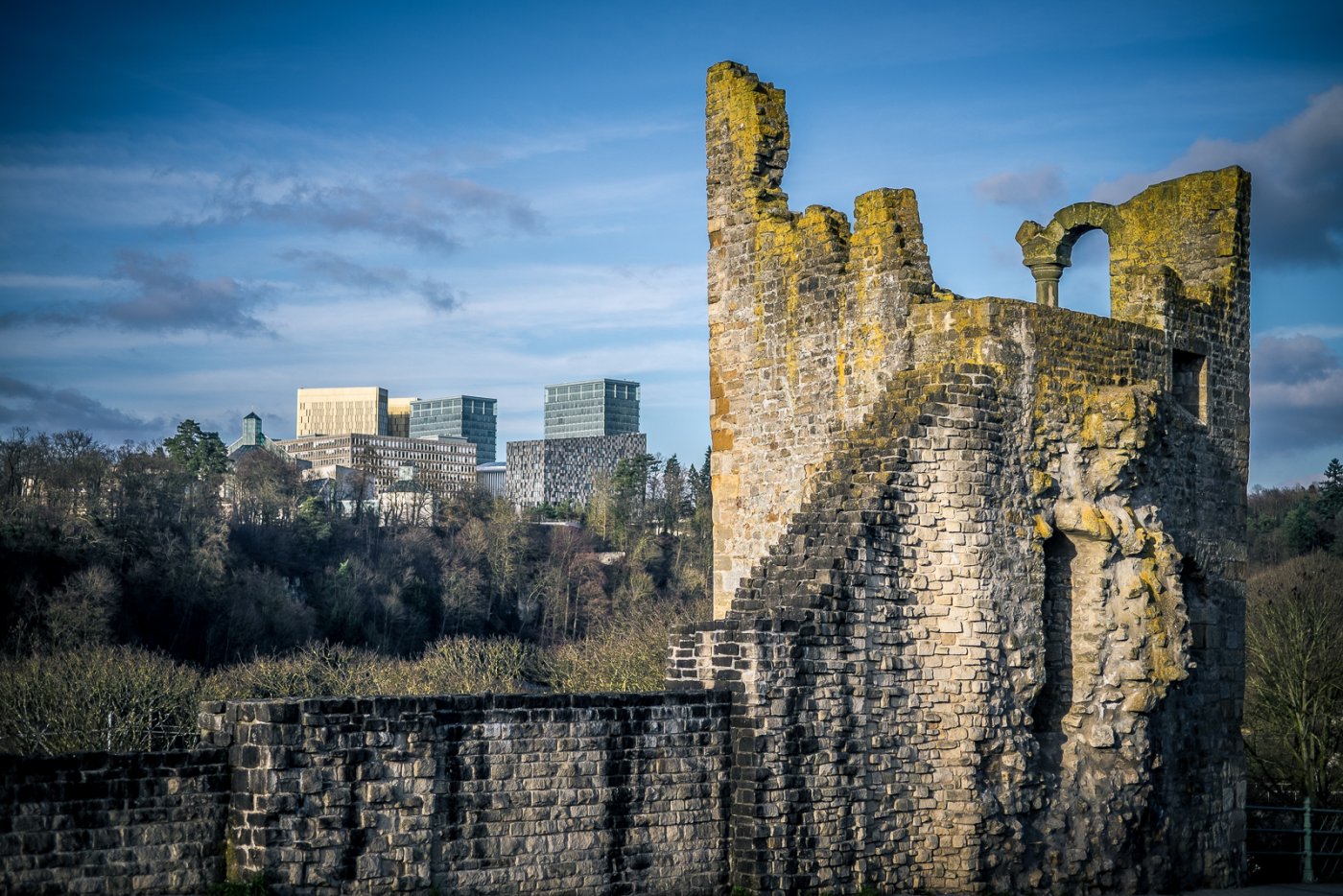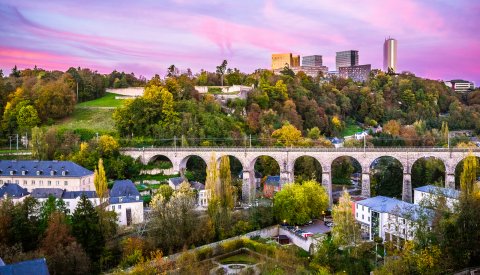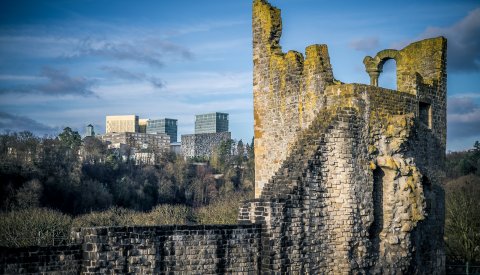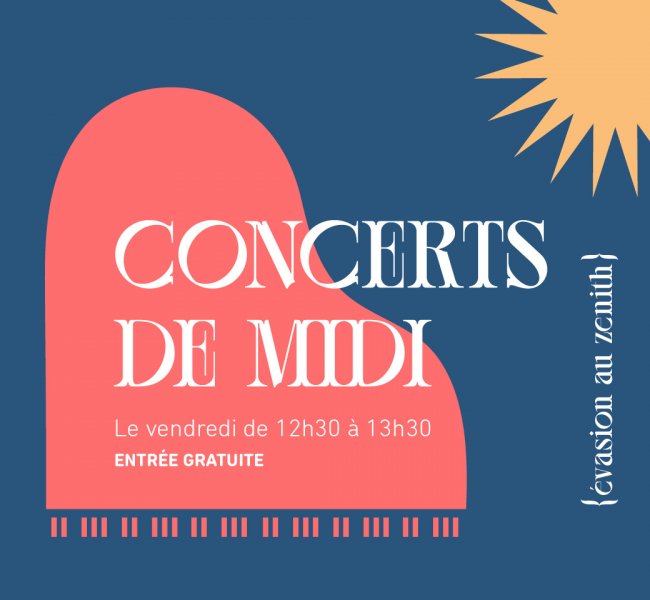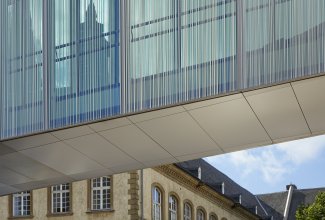Introduction
Luxembourg City is a place of striking contrasts, from its old fortifications to classic 18th and 19th century buildings and modern architectural gems. On 17 December 1994, the city's Old Town and fortifications were made a UNESCO World Heritage Site.
UNESCO promotes the identification, protection and conservation of cultural and natural heritage sites all over the world that are deemed to be of outstanding value for humanity.
To celebrate this, the City of Luxembourg and the National Commission for Cooperation with UNESCO have produced a video, showing the Old Town and the fortress walls in a new light.
Outstanding universal value
Luxembourg City: Its Old Quarters and Fortifications
"Luxembourg City: its Old Quarters and Fortifications" was entered on the UNESCO World Heritage List in 1994 under criterion (iv), as a site recognised by the 1972 Convention on World Cultural and Natural Heritage as having outstanding universal value. Due to its strategic position, Luxembourg was one of Europe's most important fortified cities from the 16th century until 1867, when its walls were dismantled. The fortress was reinforced several times as the Duchy of Luxembourg passed from one great European power to another: the emperors of the Holy Roman Empire, the House of Burgundy, the Habsburgs, the kings of France and Spain, and finally the Prussians. Until their partial demolition, the fortifications were a fine example of military architecture spanning several centuries.
- Criteria: (iv) to be an outstanding example of a type of building, architectural or technological ensemble or landscape which illustrates (a) significant stage(s) in human history.
- Listed property: 29.94 ha
- Buffer zone: 108.73 ha
The total area of the UNESCO protected site is 138.13 ha, which is 2.7% of the city. This area is subdivided into a central zone and a buffer zone. The central zone benefits from a high level of protection and is surrounded by the buffer zone, which must be used and developed in a way that provides additional protection to the heritage site.
Identifying the various elements of the historic urban landscape
"Luxembourg City: Its Old Quarters and Fortifications" boasts an extraordinary historic urban landscape. Nature plays a defining role: the surrounding valley is cut through by the Alzette and Pétrusse rivers. Forests cover the hills that extend to the historic heart of the city. Luxembourg sandstone rock formations can be found all around. This setting creates a microclimate where grapes, cereals, fruits and heirloom vegetables can be cultivated, in addition to the production of honey.
The different architectural layers of "Luxembourg City: Its Old Quarters and Fortifications" are visible for all to see. The world heritage area is divided into the upper and lower towns, each with its own identity. In the heyday of the fortress, the administrative buildings and residences of the nobility were located in the upper town, while tradespeople and the rest of the population settled in the lower town near the banks of the Alzette. Religious and intangible heritage can be found across all the city's historic districts. The Corniche promenade follows the old ramparts, connecting the natural and built landscapes and offering panoramic views.
Architectural ensembles reflect the town's evolution from its founding to the final phases of fortress reinforcement in the 19th century. The historicist architecture of the Plateau Bourbon stems from the time when Luxembourg City was opened up after the fortress was dismantled in 1867.
Managing natural and cultural heritage
The protection of the world heritage areas is governed by the general development plan, which identifies the protected areas at municipal level and defines specific conservation and development rules for each district. It encourages housing creation and social diversity. The vertical connections between the lower and upper areas reinforce the overall character of the protected area. The law on cultural heritage also includes the protection of intangible heritage. World heritage conservation and enhancement measures in line with the 2011 UNESCO Recommendation on the Historic Urban Landscape are carried out under the close collaboration of the City of Luxembourg, the Ministry of Culture and the UNESCO World Heritage Centre. The World Heritage core zone and its buffer zone are treated with equal care, ensuring a smooth transition between the UNESCO perimeter and the urban spaces located in the surrounding area. Accessibility to all public places and residential buildings must be guaranteed.
The tramline that passes through the buffer zone of the world heritage area is just one of many sustainability projects. The fact that public transport is free increases the tram's appeal and helps reduce CO2 emissions. The Pétrusse land restoration project and the redevelopment of the park located in this valley will provide a green lung for the town center. This project contributes to improving water quality and the health of the fish population. The site's historical structures are showcased and made accessible to all.
UNESCO Visitor Centre
The UNESCO Visitor Centre provides information about UNESCO's goals, the origins and importance of the World Heritage Sites, details on the Luxembourg site, as well as on the conservation measures and urban development integration measures. It is free to visit.
Educational material
These colouring pages are a fun way for children to discover the historic buildings and landmarks of our fair city. They were designed by architects Isabelle Van Driessche, Arnaud de Meyer and André Haagen. The various colours represent different chapters in Luxembourg City's history, teaching children about the city's past through a fun and entertaining activity. Before you know it, they'll be experts on the City's Old Town and fortifications.
World Heritage Cities
Organisation of World Heritage Cities
Link
Architecture
luca Luxembourg Center for Architecture – Architecture Foundation
Link
Order of Architects and Consulting Engineers (OAI)
The third edition of the guide to contemporary architecture has four tours to explore the city’s architecture, engineering and urban design.
